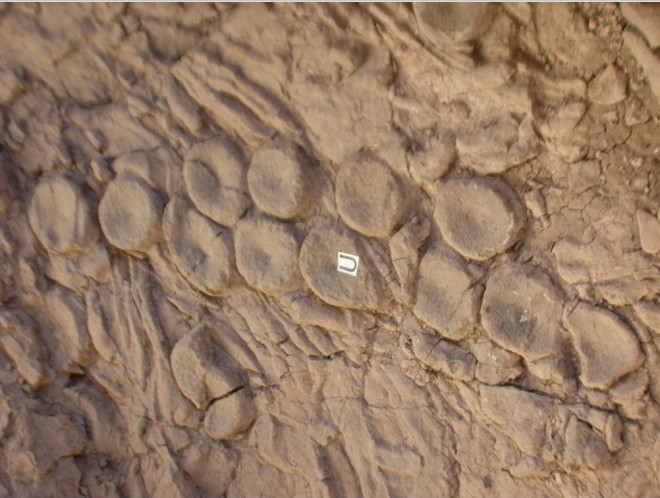We're open daily! View holiday hours
Science News
The Kraken Did It
October 12, 2011

Did you hear the one about the ancient squid that captured the 45-foot ichthyosaur during the Triassic Period?
The tentacled creature, named kraken after the mythical sea monsters, took the large marine reptiles back to their dens, called middens, and dismembered them. The intelligent kraken then arranged the vertebral discs in double line patterns, with individual pieces nesting in a fitted fashion as if they were part of a puzzle. A puzzle that resembles the pattern of sucker discs on a cephalopod tentacle, with each vertebra strongly resembling a coleoid sucker.
Good one, right? A weird, creepy tale, full of mythical monsters! Except it’s not a joke or a treatment for a B-movie: it’s part of a scientific abstract presented Monday at the annual meeting of the Geological Society of America in Minneapolis.
And then the news agencies began picking it up. So it must be true, right?
“There is no evidence that this 'kraken' existed,” is Rich Ross’s take on the story. Rich is the cephalopod guy here at the Academy and loves the things. He can talk to you for hours about these many-armed marine animals… (“Cuttlefish are like alien hummingbirds that hunt. They’re brutal predators. Their skin is amazing.” “Octopus are like super-caffeinated snails with arms and no shell. They’re vicious predators and their ability to camouflage is unbelievable!” You get the point. Check out his blog for more insights.) But about these kraken, he just shakes his head. “Squids don’t do middens, modern octopus wouldn’t do this either. There’s no evidence—it could’ve been anything.”
According to paleontologist Mark McMenamin, the researcher behind Monday’s presentation, the evidence is a bizarre fossil site at Berlin-Ichthyosaur State Park in Nevada. The site holds the remains of nine 45-foot ichthyosaurs, of the species Shonisaurus popularis.
“It was a very odd configuration of bones,” according to McMenamin. The different degrees of etching on the bones suggested that the shonisaurs were not all killed and buried at the same time. It also appeared that the bones had been purposefully rearranged. That it got him thinking about a particular modern predator known for just this sort of intelligent manipulation of bones.
“Modern octopus will do this,” McMenamin explains.
Of course, it’s the perfect Triassic crime because octopuses are mostly soft-bodied and don’t fossilize well. Only their beaks are hard and the chances of those being preserved nearby are very low. That means the evidence for the murderous kraken remains purely circumstantial.
Without hard evidence, Rich Ross is incredibly skeptical. As well as many other scientists, according to Wired and Nature News. Rich sums it up well: “You could just as well say that aliens did this.”
Image: Mark McMenamin